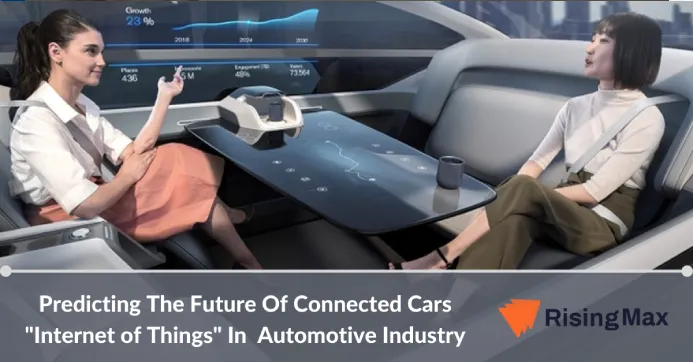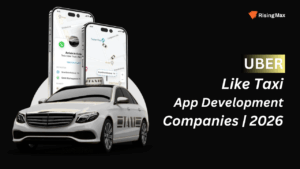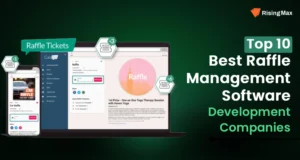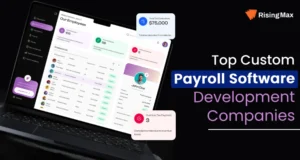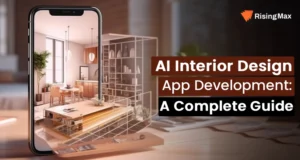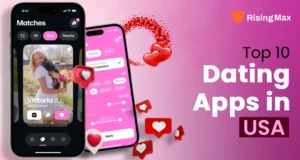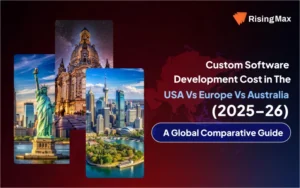There is no surprise in the statement,” automobile industry is constantly evolving, and we all need to act faster to its innovations.” All the latest technologies have changed the way people communicate and travel from one place to another. When the whole world is connected via the Internet, why won’t automobiles do the same?
Yes!

Technology has a lot of potentials to transform the world. Connected cars Internet of Things is accepted as a popular trend in the automobile field that will surely make vehicles work smarter. This blog will help you learn about connected cars, their exciting features, and the future of technology.
Connected Cars Internet of Things – What Type Of Technology Is It?
A vehicle or car that is connected to the Internet is called a connected car. In this, vehicles are usually connected via a Wireless Local Area Network. Both inside and outside, that connected car can share the Internet and data with external devices. Most automobile companies have been using two types of systems in connected cars; one is embedded, and the other is Tethered systems.
The Essential Features Of Connected Vehicles
Now is the right time to digitize your automobile business with connected mobile apps for better management of vehicles and manufacturing processes. For an amazing digital solution, getting in touch with one of the best IT consulting companies in New York can make a big difference.
An expert from the consulting team with the right technical expertise and industry best practices can transform your business in the best way.
A connected vehicle comes with some valuable and intelligent features. Connected vehicles IoT enhances the driving and ownership experience while also providing a safety net with improved security features. A linked vehicle has the following innovative features. Let’s explore them one by one:
Setting Boundary For Vehicle With Geofencing Feature
This feature is extremely useful inside the connected car. Such a feature allows the owners to set the predefined parameter for a specific radius. They can set the maximum speed the vehicle will go.
In case someone is at risk of violating the rule, they will get notified immediately. Geo-fencing is a superb feature for those who want to keep track of where the vehicle is and its running speed.
Navigation Feature For Providing Suggested Routes
Although the navigation feature is not new in cars, its use is more necessary than ever. Such an addition inside Connected Cars IoT allows drivers to plan the entire trip on maps.
You can send the most suggested routes directly to your car. In simple words, by the time you sit inside the vehicle, the route has been uploaded automatically, and you will drive off there directly.
Also, if you need any change in route, you can simply ask the car to navigate the new route. Such a feature adds many conveniences plus enhances the safety of the vehicles, drivers, and passengers.
Vehicles Can Be Controlled With Voice Commands
Our technology is so advanced that vehicles can actually talk. Now there is a feature like voice recognition that easily recognizes the language. Such a feature allows the connected cars to perform all tasks for you. For example, if you’re going to change the AC temperature of your car, there is no need to take your eyes off the road to do that task.
The IoT technology for automobiles will do that for you. All the user needs to give the command, and the vehicle starts working accordingly. Also, other tasks like opening and closing the sunroof, changing music, increasing volume, and much more can be made with a voice recognition feature.
Connectivity Technology Allows Vehicles To Communicate
Connectivity technology is there to allow connected vehicles to communicate with each other. With the help of technology, vehicles can share all the necessary information like traffic movement, road conditions, speed limits, and much more. Technology has become a vital part of autonomous vehicles on which the whole future relies.
Remote Parking Capability Within The Connected Car
As per the name suggested, the feature within the connected car allows the drivers to park the car remotely. Using the smartphone app, one can get out of the car and further enable the car to park itself at the desired location. This feature works well in tight parking areas, especially when one cannot park the car in a very congested area.
Critical Security Feature To Overcome Tricky Situations
Security is something that is driving the adoption of connected cars. You will be surprised that connected cars are now equipped with essential security features. With features like location tracking in real-time and emergency calling features, drivers can overcome all kinds of tricky situations. All concerned drivers must be aware of such solutions that help them minimize the vulnerabilities related to their vehicles.
Align the current state of IT with your business strategy by hiring the most trustworthy AI Development Company
Latest Technologies Used Inside Connected Cars Internet of Things:
5G Technology
Autonomous driving necessitates both car-to-car communication and car-to-infrastructure communication. This new mode of communication will generate a massive amount of data.
The 5G technology for sure brings improvement in car-to-car communication and better transfer of information. As we all know that self-driving or autonomous cars are the future of mobility, but 5G technology is significantly different here. Below are the main points of 5G connectivity:
- All connected cars can use 4G for faster speed and a smooth experience. But the future of IoT technology for automobiles relies on 5G, which is the 5th generation of LTE much faster than 4G.
- Even 5G networks are not well developed, but the impact is enormous on the automotive industry.
- With a fair number of connected vehicles on the road, the amount of data to be processed will also rise. That’s where 5G connectivity will shine in the industry with its much faster speeds and intense coverage.
AI & ML (Artificial Intelligence & Machine Learning)
Artificial intelligence and machine learning are two different things. Everyone is very aware of this. Machine Learning with AI allows machines to give data and learn independently. Both will be required for connected vehicles. Machine learning will become increasingly crucial as connected cars “learn” to drive through their human pilots and learn all the variables that can occur on the road and the proper reactions.
PaaS Platforms
The tens of thousands of pieces that make up a car. There will be no difference in the underlying technology platforms that enable linked cars and their associated services. Platforms as a service (PaaS) for connected devices are specifically tailored to meet the needs of hardware sensors, and manage data streams as well as the full range of functionality needed to manage IoT products. Such types of platforms are being developed by telecommunications companies as well.
What Should We Expect From Connected Automobiles?
Car manufacturers definitely need an IoT app development service to shape the automobile industry. They can consider embedding technology into automobiles compatible with the services. Software opportunities will determine the popularity of some vehicles. As car manufacturers gain a better understanding of IoT in the automotive sector, they will include more personalized user experiences in the software available in each car.
IoT Applications & Future Forecasts in Automotive Industry
OTA Software Updates
Over-the-air (OTA) software updates are cloud-based technologies that allow automakers to improve vehicle functionality by remotely updating software. Automotive IoT-based OTA update services enable car systems to download freshly available files relating to software upgrades for telematics and software that controls vehicle parts.
OTA updates update the software on the car’s systems directly, or they can be used to update external devices like mobile apps connected to the vehicle. Because OTA software upgrades may be performed remotely, they cut down on unnecessary service station visits. It also enables automakers to quickly resolve update-related difficulties and upgrade any functionality without difficulty.
Predictive/Preventive Maintenance System
Predictive diagnostics solutions based on automotive IoT are aimed to warn the driver ahead of time if any of the vehicle’s systems are about to break down or fail. Predictive maintenance systems follow the vehicle’s functional parameters by continually monitoring, collecting, recording, transferring, analyzing, and evaluating data from in-vehicle sensors in sync with various vehicular parts.
Some Of Its Benefits:
- Predictive maintenance systems can detect problems in important vehicle components and deliver real-time notifications when a part needs to be repaired or replaced.
- Predictive maintenance notifies of the need for maintenance as and when it occurs, resulting in lower maintenance costs.
- Real-time vehicle health monitoring can help prevent critical vehicle faults that could have resulted in a disaster in the future.
V-2-x Connectivity
Because of its ability to improve the safety, mobility, and efficiency of transportation networks, Vehicle to Everything (V2X) is emerging as a key driver in connected vehicle technology. It’s a smart communication system powered by automotive IoT sensors, frameworks, and gateways that ensures interoperability between vehicles, infrastructure, networks, and pedestrians.
- V-2-I (Vehicle To Infrastructure) – This connectivity type is mainly for vehicle safety. With the technology, drivers can allow their vehicles to communicate with the road infrastructure easily.
- V-2-C (Vehicle to Cloud) – Another connectivity technology that is established via the wireless network is called LTR. Vehicle to Cloud connectivity is mainly to download OTA vehicle updates.
- V-2-P (Vehicle to pedestrian) – It is a new type of system used in connected cars, especially for safety purposes. Connected cars IoT can make use of sensors to detect pedestrians, which further avoid collisions.
Data Acquisition & Application
Connected vehicles will provide an almost infinite amount of high-quality data from which both drivers and manufacturers can benefit. Manufacturers may learn more about their customer’s behavior and preferences to improve their experiences. In contrast, drivers can learn more about their driving habits and how to get the most out of their vehicles.
Autonomous Cars
Autonomous automobiles will become a genuine part of our lives. Cars could be instructed to pre-set places using voice commands or simply put an address into a phone utilizing voice-responsive systems like Alexa or Siri. The benefits to the elderly and disabled are particularly noticeable. While the technology is likely to be developed with these groups in mind, it will be readily accepted by all sections of society.
How Will Connected Cars Internet of Things Come Into Picture?
Software Development
The only way to transform connected cars IoT into reality is by building software available or providing developers with the proper tools and working conditions to create automobiles. Developers are interested in developing connected cars IoT apps. Because there are so many distinct automobile models, each with its own set of features and capabilities, a one-size-fits-all solution is essential.
Most of the automobile software companies are already on the road to creating next-gen connected mobile apps. They consistently work in an environment where they can better collaborate, innovate, develop, and test the apps. Via innovative networks with car manufacturers, it’s now possible for developers to work with car manufacturers to build apps in line with exact specifications.
IoT Technology In Cars
From a technological standpoint, the success of the connected automobile depends on software development. Carmakers must essentially determine which services will be enabled relatively early in constructing a car. The adoption of a universal Application Programming Interface can make a significant difference here.
By having access to APIs, car manufacturers can add, remove, and change services throughout the entire lifespan of a car, even when it has hit the road. This solution is outstanding because it can be used in every vehicle, irrespective of brand or model. With auto APIs, the compatibility of the car and its technology is no longer an issue.

Conclusion
We’re on our way to a bright future, with not only cars but entire cities aiming to become entirely internet-connected in the next decade. Despite security and privacy concerns, solutions are already being developed to ensure that personal security and autonomy stay in the control of users. All the above trends of Connected Cars Internet of Things are encouraging people to develop new apps such as IoT-based fleet management.
It’s true that the future of the automotive sector will be driven by technologies like AI and ML backed with IoT-based frameworks. All the futuristic technologies combined will open the doors for fully autonomous vehicles. RisingMax, as an automobile IoT technology partner assists automobile businesses with software development, advanced driver-assistance systems, cloud connectivity for connected cars, smart Transit systems, etc.
To know more about how our solutions will help grow your automobile business, feel free to contact us today.

